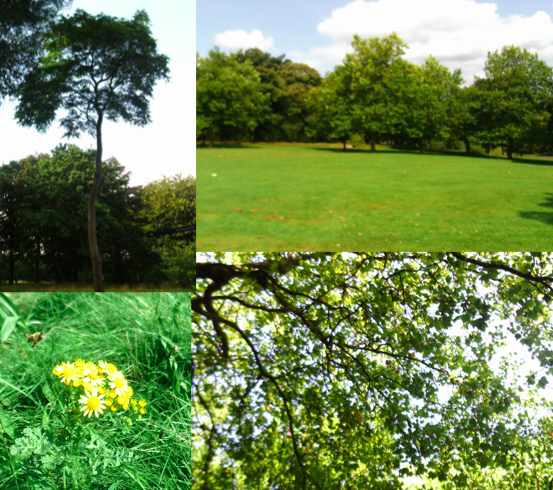 Figures from the mental health charity MQ found that only 5.8% of the UK’s total health research budget is spent on mental illness.
Figures from the mental health charity MQ found that only 5.8% of the UK’s total health research budget is spent on mental illness.
As a comparison, for each person affected by mental illness, approximately £8 is invested in mental health research while around £176 per sufferer is invested in cancer research – meaning that mental health research receives 22 times less funding than cancer research.
But why is this the case, what can we do to change these figures and, importantly, could our health information hold the key to democratising research and, if so, should this data be used?
It was questions such as these which catalysed myself and my colleagues from The University of Manchester’s Centre for Health Informatics to bring together experts from across research, the NHS & mental health charities to dive deeper into mental health research, publicly debating the following;
Do you agree that mental health data is no more sensitive than physical health data and that both should be used equally in data linkage research?
Arguing that both types of data are equivalent and should be treated the same were:
- Dr Sophie Dix (Director for Research, MQ mental health charity)
- Professor Martin Severs (Medical Director and Caldicott Guardian for NHS Digital)
Whilst arguing that physical and mental health data are intrinsically different and should be treated as such were:
- Dr Julie Morton (Senior Lecturer in social work, University of Salford)
- Dr Michelle O’Reilly (Associate Professor with the University of Leicester and Research Consultant with Leicestershire Partnership NHS Trust)
Re-reading the figures above it’s not surprising that all our speakers unanimously agreed that we need to tackle mental health issues with the same energy and priority that we afford to physical ailments and that changes must be made in order to make this a reality.
However, the path to achieving this equality was contested. The speakers explored a range of topics including: how current legislations apply to different types of health data, how research practice might change if mental health data were actually declared more sensitive than physical, whether the data we currently have access to is sufficient to produce meaningful results in mental health research and how individuals would feel if their data were leaked.
The debate sparked poignant and thought provoking discussions between our speakers and the audience around mental health service provisions, stigma and how the use of data could improve the lives of those affected by mental illness. Leaving everyone involved with a lot to think about.
As part of the debate our audience were asked to participate in the discussion using electronic voting pads to anonymously cast their vote. Prior to hearing any of the speakers arguments, 75% of the audience either strongly agreed or agreed with our proposition (mental health data is no more sensitive than physical health data and that both should be used equally in data linkage research.) while 6% disagreed, 6% strongly disagreed and 13% were unsure. Following the speaker’s presentations, the audience opinion began to diverge: 58% now either agreed or strongly agreed with the proposition while 38% disagreed or strongly disagreed, 4% remained unsure. The most significant shift in opinion was in the category ‘disagree’ which leaped from having only 6% of the overall vote prior to the debate to garnering a further 27% after.
Analysis from a questionnaire posed to audience members suggested that the speakers had managed to highlight the nuances within this subject but had not put audience members off sharing their data for research purposes. For example: although 10 of the 21 audience members who completed the questionnaire believed that mental health data was more sensitive than physical health data, 14 believed that it should still be treated the same as physical health data when used in research and 16 were willing to share their own data with researchers. The audience expanded on these views stating that stigma and negative societal attitudes surrounding mental health make this data more sensitive but that mental health research is in the public interest and that the rewards of this research outweigh the challenges.
You can watch the complete debate below
[vimeo 251177568 w=640 h=360]
Please let us know your thought in the comments section!
Post by: Sarah Fox












 The
The  In another, more recent study, similar findings were observed in college students who took part in a competitive task. Participants were randomly assigned to consume either a glucose beverage or placebo drink containing a sugar substitute. Following this, participants then competed against an opponent in a reaction time task, which has been shown previously to provide a
In another, more recent study, similar findings were observed in college students who took part in a competitive task. Participants were randomly assigned to consume either a glucose beverage or placebo drink containing a sugar substitute. Following this, participants then competed against an opponent in a reaction time task, which has been shown previously to provide a  While these studies do not necessarily ascertain causality, the relationship between low blood glucose and the tendency to become aggressive makes biological sense, since glucose is the main energy source our brains need to control such negative impulses. As observed in studies and experienced by many of us, ‘hangry’-related crimes can also be easily avoided by supplying the potential offender with food, further supporting the role of glucose in hunger-related anger. So next time ‘hangriness’ threatens to ruin the harmony in your household, fill your mouth with food rather than foul language, and save yourself a night banished to the couch.
While these studies do not necessarily ascertain causality, the relationship between low blood glucose and the tendency to become aggressive makes biological sense, since glucose is the main energy source our brains need to control such negative impulses. As observed in studies and experienced by many of us, ‘hangry’-related crimes can also be easily avoided by supplying the potential offender with food, further supporting the role of glucose in hunger-related anger. So next time ‘hangriness’ threatens to ruin the harmony in your household, fill your mouth with food rather than foul language, and save yourself a night banished to the couch.
 Whilst sometimes trivialised,
Whilst sometimes trivialised, 





 On Tuesday the 25th, Susan Michie from University College London gave a keynote talk about the
On Tuesday the 25th, Susan Michie from University College London gave a keynote talk about the  On Wednesday the 26th the conference was drawn to a close with a compelling talk from Sally Okun, Vice President for Advocacy, Policy and Patient Safety at
On Wednesday the 26th the conference was drawn to a close with a compelling talk from Sally Okun, Vice President for Advocacy, Policy and Patient Safety at